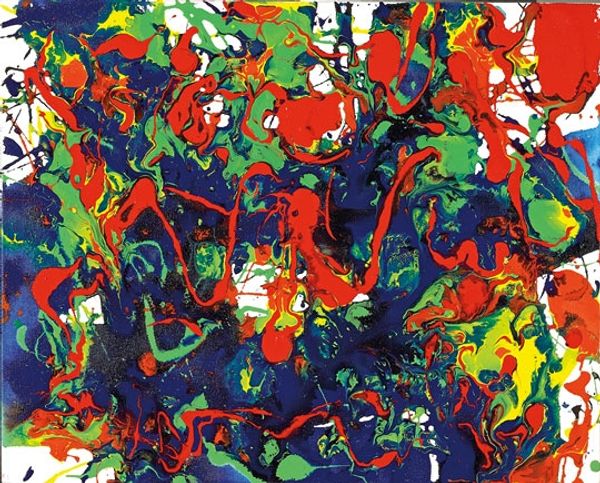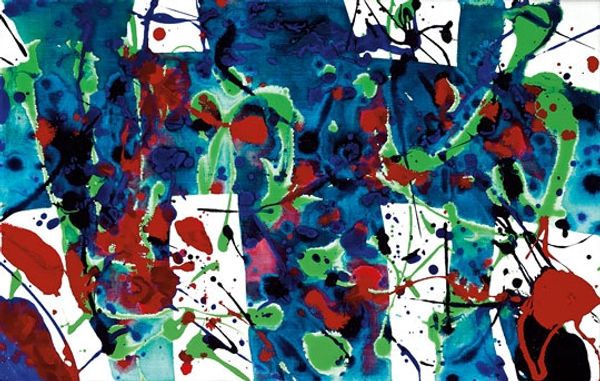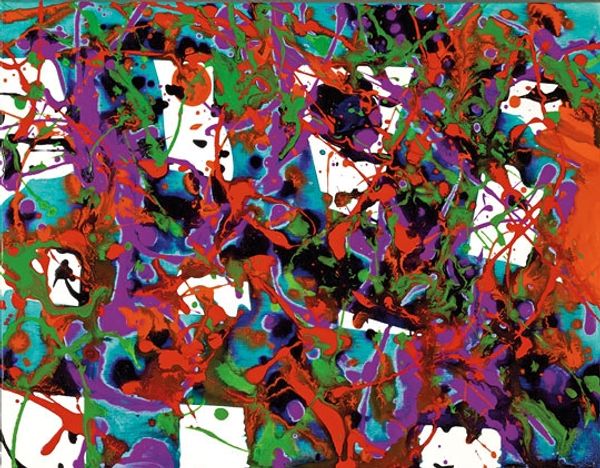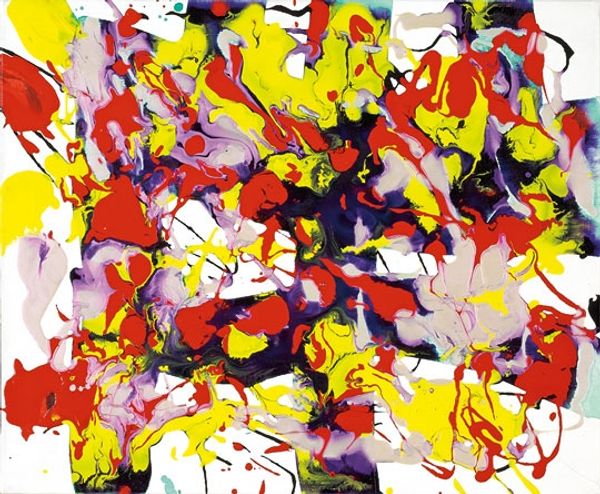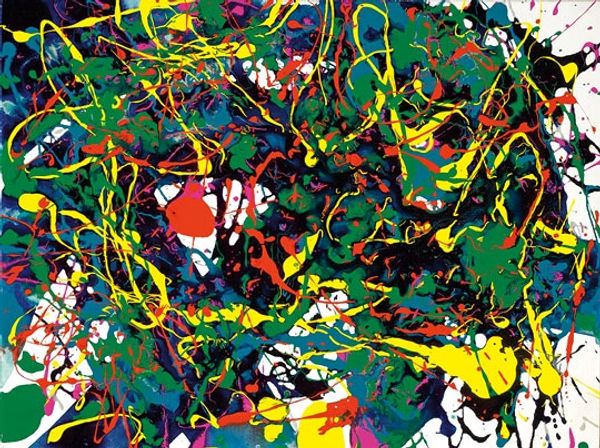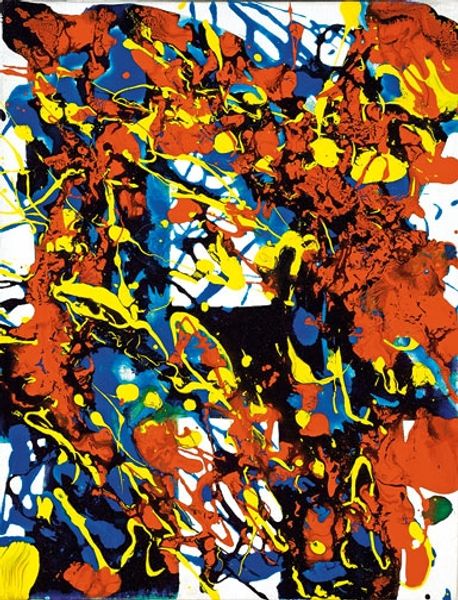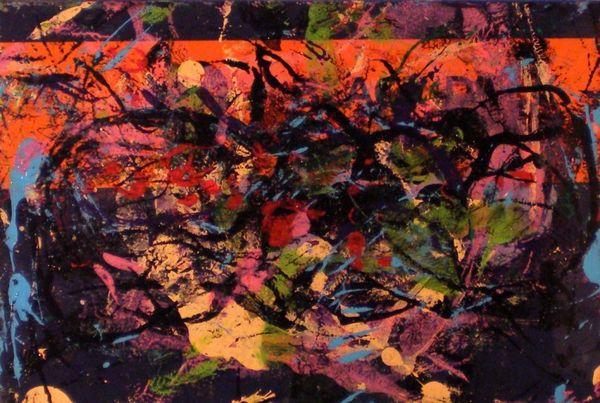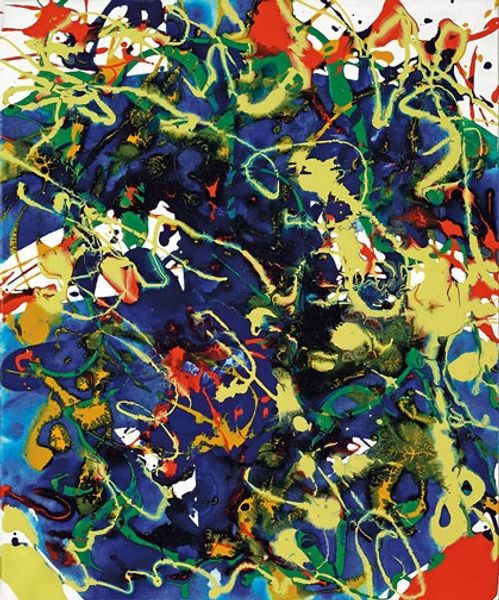
Copyright: 2012 Sam Francis Foundation, California / Artists Rights Society (ARS), NY
Curator: Looking at this striking canvas, I'm immediately struck by its dynamism. The colors—primarily blues, greens, and blacks—seem to be almost exploding outward. Editor: We're currently observing Sam Francis' "Untitled (SFP94-17, SF94-032)," a mixed media artwork completed in 1994. Its gestural abstraction feels like a radical departure, but it deeply connects with post-war anxieties regarding power and instability. One sees his attempt to deconstruct traditional power structures, perhaps? Curator: Perhaps, but I am compelled by the recurring triad of colors - the symbolism feels undeniable. I wonder, is the royal blue a nod to enlightenment, with the chaotic black representing a more shadowed and complex collective consciousness? And where does this bright verdant pigment play in? Editor: That's a fascinating take. Consider Abstract Expressionism in its historical context, though. It was largely a movement defined, unfortunately, by white male voices. In what ways might we use Francis' works to critique such historical exclusion? I notice his style embraces what could be called chaos. How does this, politically, de-center expectations of what artistic mastery "should" be? Curator: His mastery, certainly, involves pushing acrylic paint into territories rarely considered for such medium. Look closely, and you’ll find moments of such impasto technique that are so daring for such material. In some cultures, verdant greens such as we see here, express growth. Francis, himself in his early 70s at the time, surely could not deny aging, decay... Perhaps rebirth into another realm, and the unknown challenges for humanity? Editor: Right, and if we place the ecological within reach of these readings, do we have room to claim his art as foreshadowing environmental reckoning, a theme of such profound global resonance now? Or could this also speak to more personal and insular dramas, struggles regarding the body perhaps, late-stage capitalism, gender performativity...? Curator: I hadn’t quite seen it in such ways, such contemporary frameworks and I love the breadth of interpretations. Now when I step back I appreciate its capacity to hold so much more than an aesthetic expression. Editor: Indeed. The canvas opens, it seems, not to aesthetic pleasure only, but avenues of intellectual and affective questioning.
Comments
No comments
Be the first to comment and join the conversation on the ultimate creative platform.
